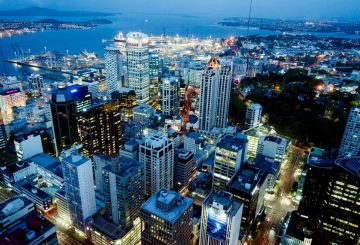Ang Kūmara, isang uri ng matamis na patatas, ay bumalik pagkatapos ng maraming mga pananim na nawasak ng Cyclone Gabrielle. Halos lahat ng kūmara ng New Zealand ay lumaki sa Northland, kung saan mainit na klima at mayabong lupa ay perpekto. Gayunpaman, iniwan ng bagyo ang karamihan sa ani na nabubulok sa lupa. Sa pinakamasama nito, ang ilang mga presyo ng kūmara ay umabot sa $14 bawat kilo.
Ngayon, bumalik sa mga supermarket ang orange, gold, at red kūmara ng bagong panahon. Sinabi ni Brigit Corson, pinuno ng Foodstuff Produce at Butchery North Island, na ang pulang kūmara ay humigit-kumulang $7 bawat kilo. Ang mga uri ng orange at ginto ay inaani pa rin, ngunit inaasahang bumaba ang kanilang mga presyo sa $7 bawat kilo sa mga darating na linggo. Habang tumataas ang supply, patuloy na bababa ang mga presyo.
Ipinaliwanag ni Corson na ang kūmara ay isang maraming nalalaman na ani at ginagamit ang lahat ng laki. Ang mga mas malaki ay karaniwang pinoproseso, ang mga mas maliit ay binabalat at ginagamit sa kūmara hash, at ang mga katamtamang katamtamang ay ibinebenta sa mga supermarket. Gayunpaman, dahil sa kamakailang kakulangan, ang lahat ng laki ay naibenta, na humahantong sa ilang pagkakaiba-iba ng laki para sa mga customer.
Noong 2023, halos 60% ng ani ng kūmara ang nawasak. Sa taong ito, inaasahang babalik ang ani sa halos normal na antas. Ang Kūmara ay inaani isang beses sa isang taon at pagkatapos ay nakaimbak sa malamig na imbakan hanggang sa mailabas ito sa merkado. Sa isang normal na ani, inaasahan ni Corson na magkaroon ng kummara hanggang sa magsimula ang bagong panahon sa Pebrero.
Malubhang naapektuhan din ng Cyclone Gabrielle ang mga tagagawa ng prutas ng bato at mansanas sa Hawke’s Bay, na may ilan ang nawala ng 25% ng kanilang mga puno. Sa kabila nito, pinuri ni Corson ang kalidad ng prutas ng bato at nectarine na kasalukuyang nasa mga tindahan, na mula sa Hawke’s Bay.
Ayon sa Stats NZ, ang average na presyo ng kūmara noong Enero 2023 ay $4.37 bawat kilo, at tumaas ang mga ito sa $12.98 bawat kilo noong Setyembre 2023. Nag-iiba ang kasalukuyang presyo ng supermarket, na may mga diskwento na magagamit sa ilang mga tind

















































-360x245.jpg)










